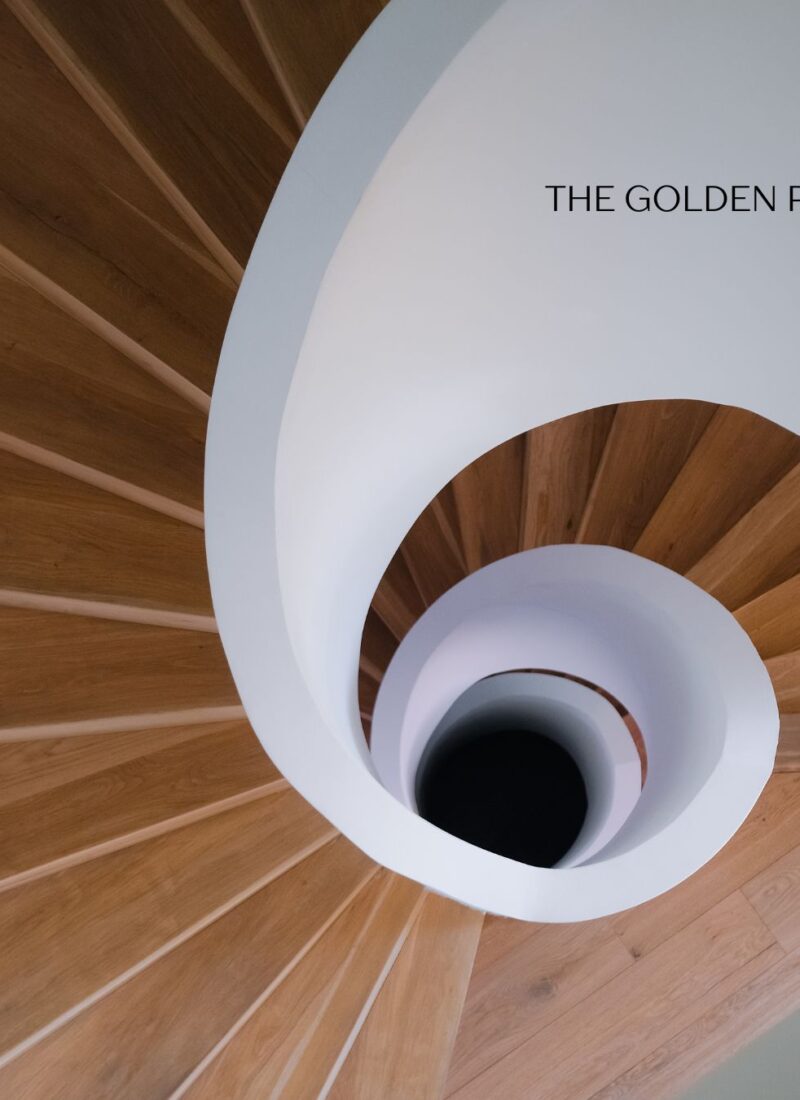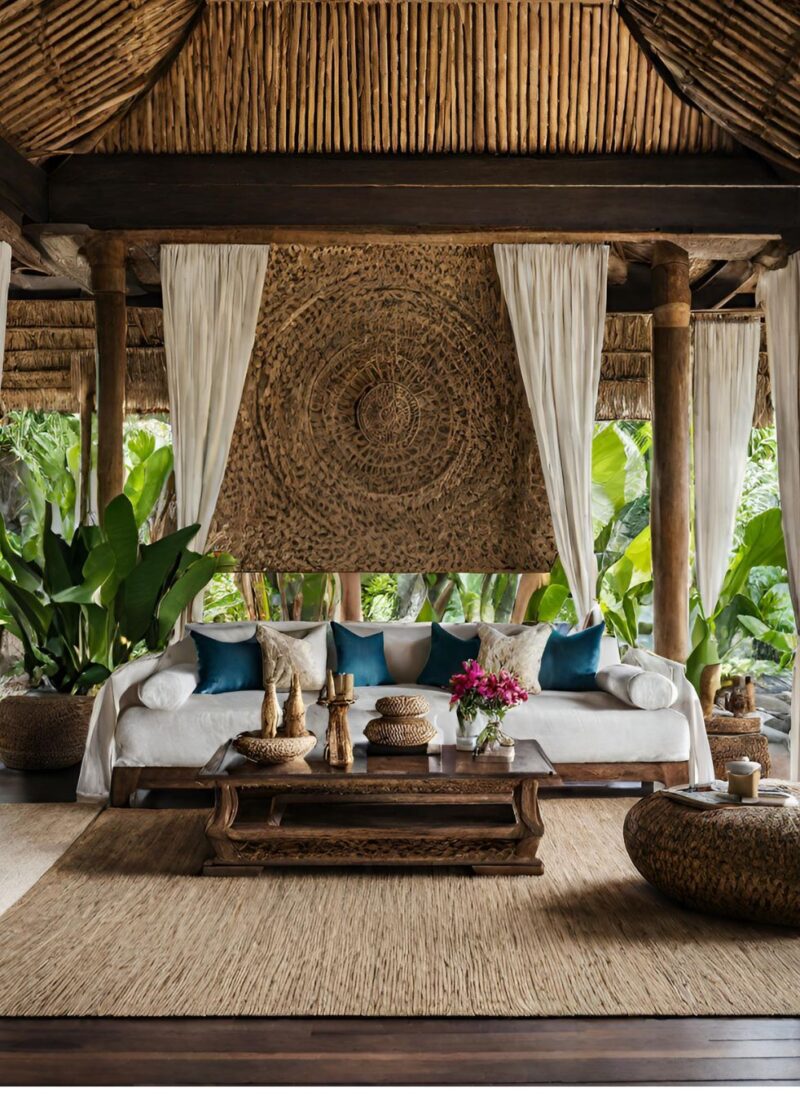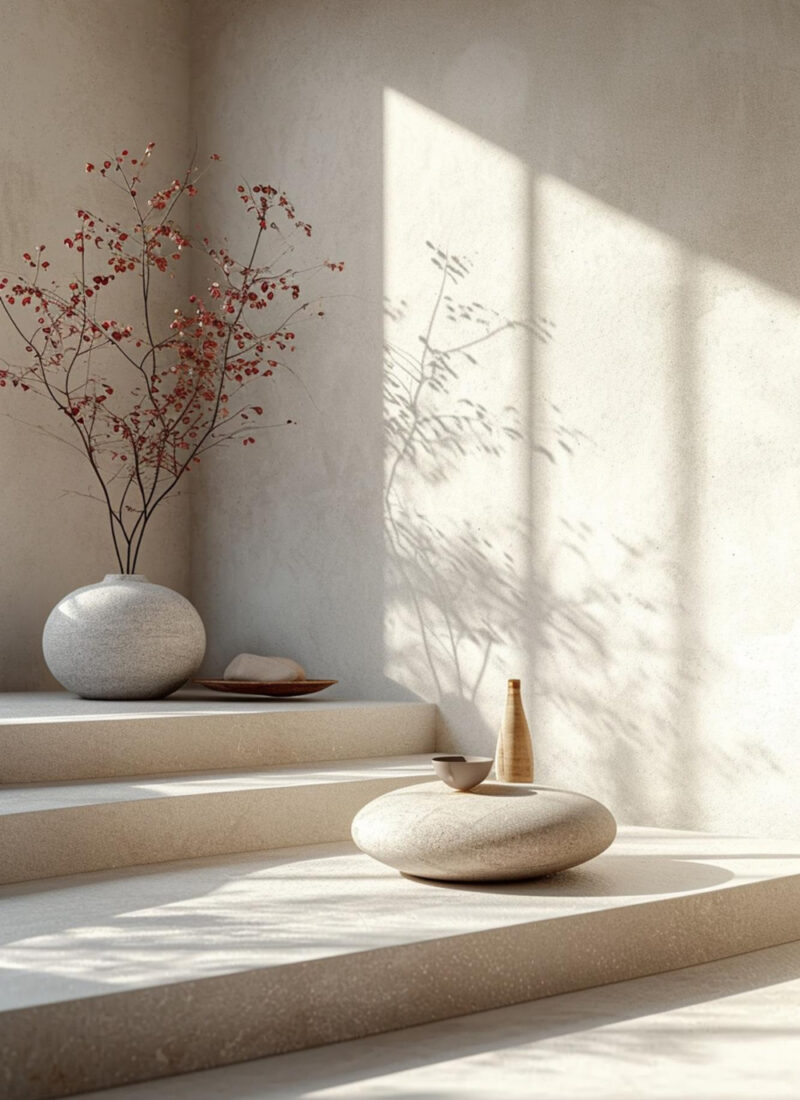Biophilic Interior Design 2024
Humans have adapted to their environment. This is the principle behind the Biophilic interior design. With its focus on getting people to be closer to nature through the use of natural elements, the Biophilic interior design concept has slowly gained traction in recent months.
This article tackles what is the exact meaning of the Biophilic interior design, what encompasses this trend, and what isn’t included in Biophilic design interiors. In addition, you will learn how to create a Biophilic room through the introduction of the elements of the Biophilic design. At the end of this article, you are given design tips to make your living space more Biophilic.
What is Biophilic Design?
Biophilic design is an innovative approach in interior design focused on increasing occupants’ connection to the natural environment. It involves using natural elements like plants, water, and sunlight to create spaces that are visually and sensor ally connected to nature. This concept isn’t new; its roots can be traced back to ancient civilizations that revered and incorporated nature in their structures.Why Biophilic Design in Homes?
The benefits of biophilic design in homes are manifold. It has been shown to reduce stress, enhance creativity, and improve overall well-being. This connection with nature is not just about aesthetics; it’s about creating a living space that supports physical and mental health.How Do You Define Biophilic Interior Design?
It was in the early 1980s that the concept of Biophilia came about. Edward O. Wilson hypothesized that there is a direct connection between humans and the natural world. As people stay indoors more and more, there is a need to bring the great outdoors inside the living space and subtly simulate what is in nature indoors.
In its simplest meaning, Biophilic design is with organic and natural -inspired design bringing a lot of plants indoors . It is not a wonder why there is a boom in the indoor plant market. But you need to keep note that Biophilic interior design examples go beyond adding plants to the design.
Photo by Keszthelyi Timi on Unsplash
Biophilic interior design is often associated with natural elements, whether these are actual materials or geometries naturally found in the environment. However, you have to take note that not all natural elements can be biophilic. Anything natural that can contribute to human welfare and health can be called such. Moreover, other natural elements that don’t improve or become beneficial to the well-being of humans aren’t considered biophilic designs.
Furthermore, a Biophilic design is an intentional and constant or repeated contact with nature, not just a one-time deal. It’s not an occasional or transitory experience. This kind of design includes design elements that reinforce the casual yet constant experience of being one with nature in a living space. It isn’t Biophilic if the space with features from nature is isolated. For example, adding a single indoor plant to a room would not be considered an effective Biophilic design.
Recent Post:Biophilic Interior Design 2024
Humans have adapted to their environment. This is the principle behind the Biophilic interior design. With its focus on getting people to be closer to nature through the use of natural elements, the Biophilic interior design concept has slowly gained traction in recent months.
This article tackles what is the exact meaning of the Biophilic interior design, what encompasses this trend, and what isn’t included in Biophilic design interiors. In addition, you will learn how to create a Biophilic room through the introduction of the elements of the Biophilic design. At the end of this article, you are given design tips to make your living space more Biophilic.
What is Biophilic Design?
Biophilic design is an innovative approach in interior design focused on increasing occupants’ connection to the natural environment. It involves using natural elements like plants, water, and sunlight to create spaces that are visually and sensor ally connected to nature. This concept isn’t new; its roots can be traced back to ancient civilizations that revered and incorporated nature in their structures.Why Biophilic Design in Homes?
The benefits of biophilic design in homes are manifold. It has been shown to reduce stress, enhance creativity, and improve overall well-being. This connection with nature is not just about aesthetics; it’s about creating a living space that supports physical and mental health.How Do You Define Biophilic Interior Design?
It was in the early 1980s that the concept of Biophilia came about. Edward O. Wilson hypothesized that there is a direct connection between humans and the natural world. As people stay indoors more and more, there is a need to bring the great outdoors inside the living space and subtly simulate what is in nature indoors.
In its simplest meaning, Biophilic design is with organic and natural -inspired design bringing a lot of plants indoors . It is not a wonder why there is a boom in the indoor plant market. But you need to keep note that Biophilic interior design examples go beyond adding plants to the design.
Photo by Keszthelyi Timi on Unsplash
Biophilic interior design is often associated with natural elements, whether these are actual materials or geometries naturally found in the environment. However, you have to take note that not all natural elements can be biophilic. Anything natural that can contribute to human welfare and health can be called such. Moreover, other natural elements that don’t improve or become beneficial to the well-being of humans aren’t considered biophilic designs.
Furthermore, a Biophilic design is an intentional and constant or repeated contact with nature, not just a one-time deal. It’s not an occasional or transitory experience. This kind of design includes design elements that reinforce the casual yet constant experience of being one with nature in a living space. It isn’t Biophilic if the space with features from nature is isolated. For example, adding a single indoor plant to a room would not be considered an effective Biophilic design.
Recent Post:Bring Nature In
Usually, living spaces are too sterile and have no connection whatsoever to the outdoor elements. Adding indoor plants, water features and natural materials can help mimic the idea of being outdoors.
It’s Not Just About the Plants, Though.
One of the more obvious elements is of the Biophilic design is the addition of plants. But plants are just one of the many elements that comprise this kind of design. A deeper meaning would involve human response to natural forms, even if such forms are inanimate. For example, the curves of the stone or the natural arrangements found in snail shells. This is the holistic approach to Biophilic design.
14 Patterns of Biophilic Interior Design
Photo by Devon Janse van Rensburg on Unsplash
It’s important to know how Biophilic interior design flows so it would be easier to follow its aesthetics. According to the principles of biophilia, there are two ways to reconnect with nature: directly or indirectly.
Direct connection means putting elements of nature in your interior design. For example, adding rocks and wood slabs to the room. Opening a window to hear the sound of waves or birds is also an example of direct connections.
Natural Light: The mother nature of Biophilic Design
Natural light plays a pivotal role in biophilic interior design. It’s essential for our circadian rhythms and overall health. Maximizing natural light can be achieved through strategically placed windows and reflective surfaces. The emotional and health benefits of sunlight are undeniable, making it a core element of biophilic design.Photo by Gabriel Tenan on Unsplash
Water Elements: A Tranquil Addition
The inclusion of water features, such as indoor fountains or aquariums, adds a tranquil element to the home. The sound of water can be soothing and meditative, enhancing the overall sense of peace in a space.Non-Visual Connection with Nature in the space
Using sounds that imitate sounds found in nature or adding fabrics that can mimic or represents natural elements such as water are examples of this pattern. For example, natural materials like chimes to your windows or include throw pillows with curvy patterns that could represent waves.
Thermal & Airflow Variability
Adding and controlling your air conditioning unit or opening or closing your ventilation falls into this category.
Dynamic & Diffuse Light
Adding lighting features that diffuse light or encourage ambient lighting are two examples of this pattern. Adding curtains to control the amount of light coming in is another example.
Using Natural Materials: contact between people and nature
Incorporating natural materials such as wood, stone, and bamboo brings an earthy, grounding feel to interior spaces. These materials are not only visually pleasing but often sustainable, supporting eco-friendly design practices.Adding Materials love of Nature
Having accents made from leather. some of notable examples, wool, and other naturally made fibers and using colors inspired by nature are part of this principle.
Interior Architecture for designer use and Productivity
Finally, biophilic design elements is not just about aesthetics; it’s about creating environments that positively impact our well-being and productivity. Studies have shown that spaces with natural elements can improve cognitive function and reduce stress levels.Photo by Dmitry Zvolskiy:
The unexpected curves and winding paths encourage anticipation or tease the senses. This can be exemplified by partially concealing a focal point so the viewer wants to see more of the element. You can create mazes for your gardens or hide a wonderful artwork with a screen door.
Principles of Biophilic Design
Applying these idea how do you improve and apply the Biophilic way of life to interior design? Here are some simple steps that you can do to get you started.
- Declutter. People tend to accumulate a lot of things over the years. Get rid of things you don’t need to free some space to create an airier area. This could dramatically reduce your stress and make you relax.
- Open your windows to let the sunshine in. Allow yourself to breathe fresh air and listen to birds chirping or the sound of the rain splattering on the wet pavement. Such a simple gesture already connects you to nature.
- One of the simplest ways to create a Biophilic room is to add plants and water features to your living room. Add stones to the water feature to replicate a waterfall, thus, bringing a sensory experience into the room.
- Add sheer curtains that won’t obstruct the view of the outdoors from the inside. This could work wonderfully if you have a lush garden or you live in a neighborhood with lots of trees. It has been shown that patients recover faster if they have a view of some kind of greenery.
- Add images of greenery. Choose images that encourage inspiration or evoke curiosity.
- Always consider your view when changing the layout. If you need to, have some structural changes. If you can knock down a wall and add some windows, that would be a great idea. Windows provide better airflow that improves the air quality inside the room.
The Importance of Biophilic Design Principles
Biophilic design is based on certain principles that guide the integration of natural elements into the built environment. Understanding and applying these principles is important for creating a truly biophilic space.The final thoughts
Who doesn’t want to return to an abode that nurtures you and relieves you from everyday stress, right? Biophilic interior design does that. What do you think of this design? Is it for you? Please tell us in the comment
Bring Nature In
Usually, living spaces are too sterile and have no connection whatsoever to the outdoor elements. Adding indoor plants, water features and natural materials can help mimic the idea of being outdoors.
It’s Not Just About the Plants, Though.
One of the more obvious elements is of the Biophilic design is the addition of plants. But plants are just one of the many elements that comprise this kind of design. A deeper meaning would involve human response to natural forms, even if such forms are inanimate. For example, the curves of the stone or the natural arrangements found in snail shells. This is the holistic approach to Biophilic design. Recent Post
14 Patterns of Biophilic Interior Design
Photo by Devon Janse van Rensburg on Unsplash
It’s important to know how Biophilic interior design flows so it would be easier to follow its aesthetics. According to the principles of biophilia, there are two ways to reconnect with nature: directly or indirectly.
Direct connection means putting elements of nature in your interior design. For example, adding rocks and wood slabs to the room. Opening a window to hear the sound of waves or birds is also an example of direct connections. Recent Post What Is Classic Interior Design?
Natural Light: The mother nature of Biophilic Design
Natural light plays a pivotal role in biophilic interior design. It’s essential for our circadian rhythms and overall health. Maximizing natural light can be achieved through strategically placed windows and reflective surfaces. The emotional and health benefits of sunlight are undeniable, making it a core element of biophilic design.Photo by Gabriel Tenan on Unsplash
Water Elements: A Tranquil Addition
The inclusion of water features, such as indoor fountains or aquariums, adds a tranquil element to the home. The sound of water can be soothing and meditative, enhancing the overall sense of peace in a space.Non-Visual Connection with Nature in the space
Using sounds that imitate sounds found in nature or adding fabrics that can mimic or represents natural elements such as water are examples of this pattern. For example, natural materials like chimes to your windows or include throw pillows with curvy patterns that could represent waves.
Thermal & Airflow Variability
Adding and controlling your air conditioning unit or opening or closing your ventilation falls into this category.
Dynamic & Diffuse Light
Adding lighting features that diffuse light or encourage ambient lighting are two examples of this pattern. Adding curtains to control the amount of light coming in is another example.
Using Natural Materials: contact between people and nature
Incorporating natural materials such as wood, stone, and bamboo brings an earthy, grounding feel to interior spaces. These materials are not only visually pleasing but often sustainable, supporting eco-friendly design practices.Adding Materials love of Nature
Having accents made from leather. some of notable examples, wool, and other naturally made fibers and using colors inspired by nature are part of this principle.
Interior Architecture for designer use and Productivity
Finally, biophilic design elements is not just about aesthetics; it’s about creating environments that positively impact our well-being and productivity. Studies have shown that spaces with natural elements can improve cognitive function and reduce stress levels.Photo by Dmitry Zvolskiy:
The unexpected curves and winding paths encourage anticipation or tease the senses. This can be exemplified by partially concealing a focal point so the viewer wants to see more of the element. You can create mazes for your gardens or hide a wonderful artwork with a screen door.
Principles of Biophilic Design
Applying these idea how do you improve and apply the Biophilic way of life to interior design? Here are some simple steps that you can do to get you started.
- Declutter. People tend to accumulate a lot of things over the years. Get rid of things you don’t need to free some space to create an airier area. This could dramatically reduce your stress and make you relax.
- Open your windows to let the sunshine in. Allow yourself to breathe fresh air and listen to birds chirping or the sound of the rain splattering on the wet pavement. Such a simple gesture already connects you to nature.
- One of the simplest ways to create a Biophilic room is to add plants and water features to your living room. Add stones to the water feature to replicate a waterfall, thus, bringing a sensory experience into the room.
- Add sheer curtains that won’t obstruct the view of the outdoors from the inside. This could work wonderfully if you have a lush garden or you live in a neighborhood with lots of trees. It has been shown that patients recover faster if they have a view of some kind of greenery.
- Add images of greenery. Choose images that encourage inspiration or evoke curiosity.
- Always consider your view when changing the layout. If you need to, have some structural changes. If you can knock down a wall and add some windows, that would be a great idea. Windows provide better airflow that improves the air quality inside the room.
The Importance of Biophilic Design Principles
Biophilic design is based on certain principles that guide the integration of natural elements into the built environment. Understanding and applying these principles is important for creating a truly biophilic space.The final thoughts
Who doesn’t want to return to an abode that nurtures you and relieves you from everyday stress, right? Biophilic interior design does that. What do you think of this design? Is it for you? Please tell us in the comment




